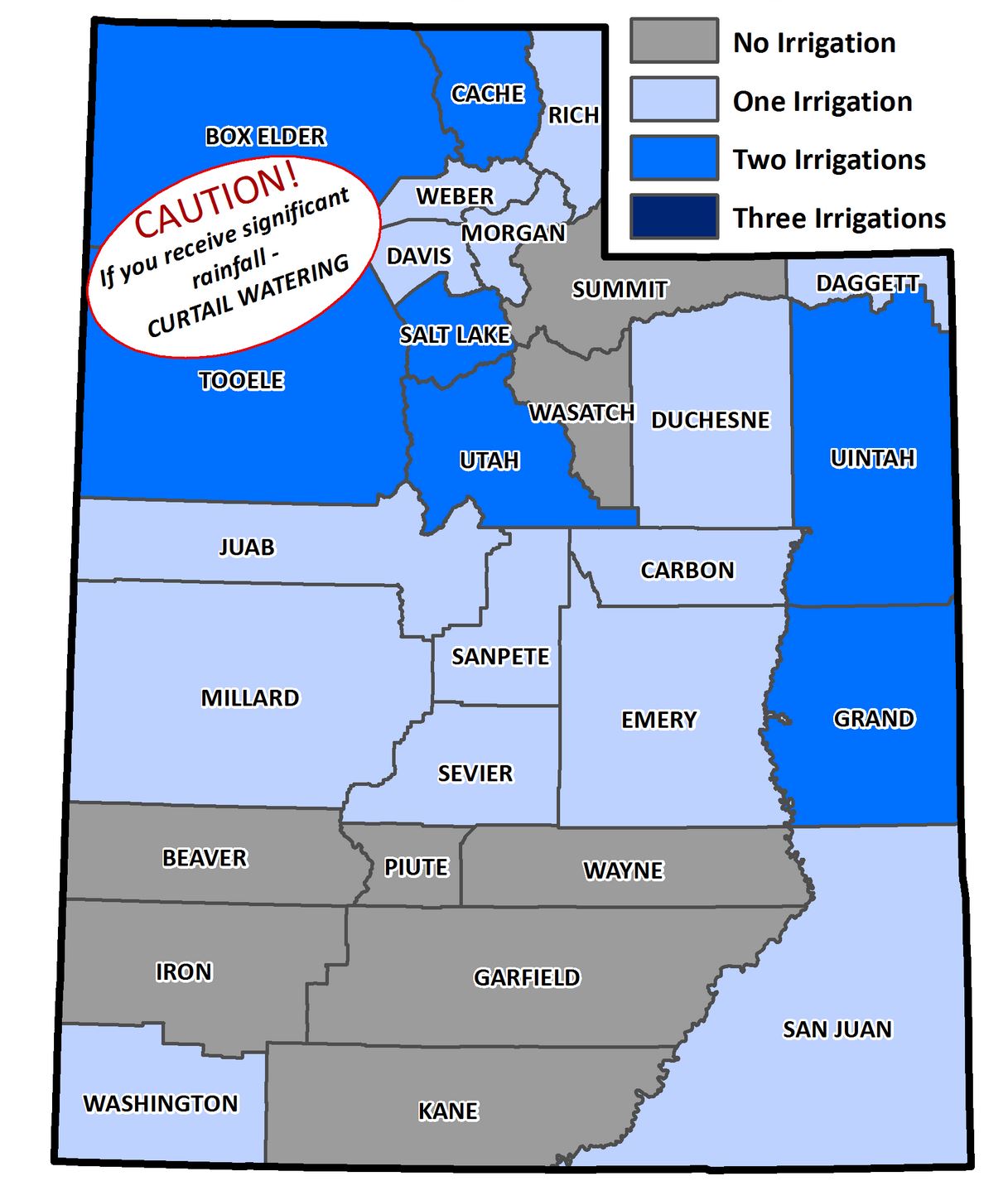Designing a Basic PVC Home Garden Drip Irrigation System
Due to water costs, and increasing water demands, gardeners need to be concerned about conservation. One effective way to conserve water is by utilizing drip irrigation.
In Utah, urban landscape irrigation accounts for 50-65% of the annual municipal water use, and much of it is applied in excess of the plant's needs.
This excess is a tremendous resource waste and water lost through overspray causes substantial damage to hardscapes (i.e., decks, patios, fountains, decorative concrete, etc.).
Scheduling irrigation according to landscape plant water needs can reduce excess water use. In addition to conserving water, proper irrigation can encourage deeper root growth and healthier, more drought tolerant landscapes.

An important component of water-efficient landscaping is creating hydrozones for your irrigation needs. To provide adequate water to all plants without over or under-watering some, group plants with similar irrigation needs in one zone. Once your plants are grouped into zero, low, medium and high water groups, you should plan your irrigation schedule to apply the appropriate amount of water to each zone.
You can learn a great deal about plant-water requirements simply by observation. Signs, such as wilting, will let you know when many landscape plants require watering, but be careful not to overdo it. Plant roots need just as much air as water and you don’t want to drown them. If you are using an automatic irrigation timer, be sure to adjust it seasonally as the weather changes.
A great deal of water is wasted when automatic irrigation systems are continually programmed for the hottest part of the summer without adjusting for times when temperatures are cooler and more natural precipitation is occurring. Another important aspect of irrigation planning includes routine maintenance of the system.
Monthly examination of the irrigation system, while in use, will help you to find and repair any broken, misaligned, or clogged sprinkler heads and keep your system running efficiently.
Drip Irrigation systems consists of plastic pipes with emitters that deliver water directly to plants. These types of systems are great for water-efficient landscapes as water goes directly to the plants roots and is not wasted on areas that do not need to be watered.
Drip irrigation can be used to water shrubs, trees, perennials, annuals and even vegetable gardens and potted plants.
Benefits of drip systems include:

Turfgrass has shallower roots than other landscape plants and therefore should be irrigated more frequently, but not as deeply as other landscape plants. Consider using turfgrasses with lower water requirements to reduce water use even further.
Plan and design irrigation systems so that turfgrass areas are irrigated separately from other landscape plants. There are several resources available to determine the appropriate watering schedule for turf areas in Utah.
Weekly Lawn Watering Guide from the Utah Division of Water Resources
Outdoor Watering Guide from the Utah Division of Water Resources
 Irrigating Trees and Shrubs
Irrigating Trees and ShrubsTrees and shrubs have much deeper and more extensive root systems than turfgrass so they should be watered less frequently but for longer periods of time.
The optimum time to water is just before you can observe any water stress. Therefore, it is important to determine sub-surface soil moisture. Soil moisture can be determined using a soil moisture probe.
Trees or shrubs should be watered to a depth of 18-20 inches. The amount of water to apply in any situation depends on the soil type. Sandy soils absorb water the fastest (about 2" per hour), followed by loam soils (3/4" per hour). Clay soils have the slowest absorption rate (1/2"per hour).
By allowing water to penetrate deeper into the soil profile, you are encouraging deeper rooting and a more drought tolerant plant. Frequent, light irrigation will lead to plants that have a shallow root system and that are more prone to water stress. When using sprinkler systems about 1/2 -1 inch of water may be required weekly for shrubs and smaller trees (<4" trunk diameter).
For drip irrigation about 5-50 gallons of water may be required. These amounts would be higher in southern Utah and lower in northern Utah and would also depend on plant size. Large trees (>4" trunk diameter), depending on the size of the tree, may require hundreds of gallons of water per week.
Water newly planted trees and shrubs more frequently until the root system is established. Also, mulch and control weeds and grasses around the trunk of trees and shrubs to reduce competition for water and nutrients.
Irrigation system maintenance is necessary to ensure the most efficient use of water that is being applied. Irrigation controllers should be checked at the beginning of each growing season before running sprinklers for the first time.